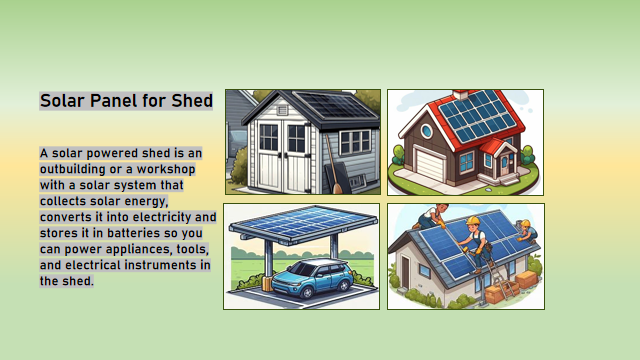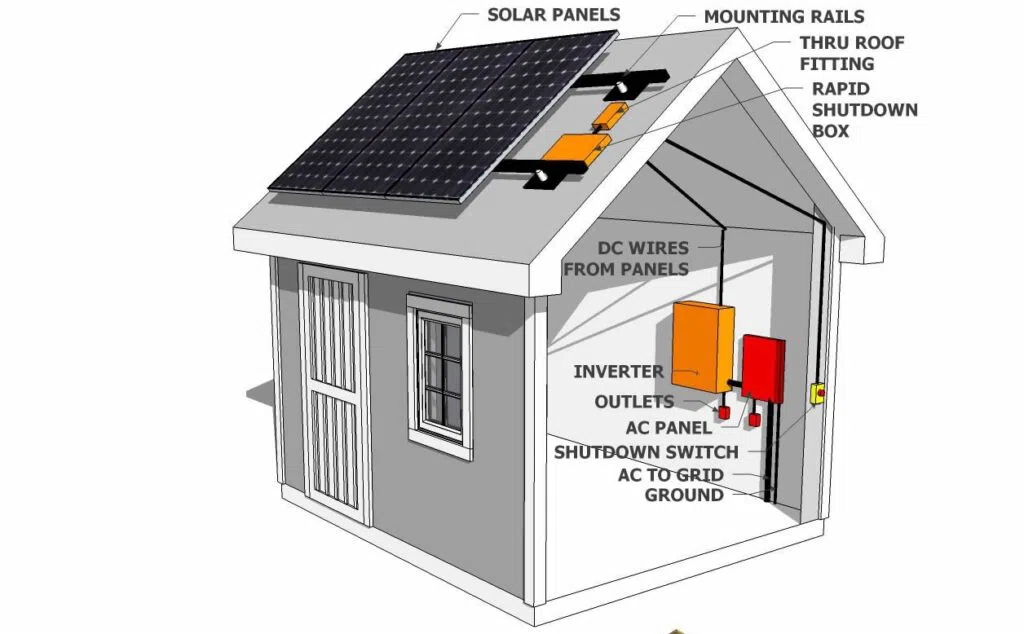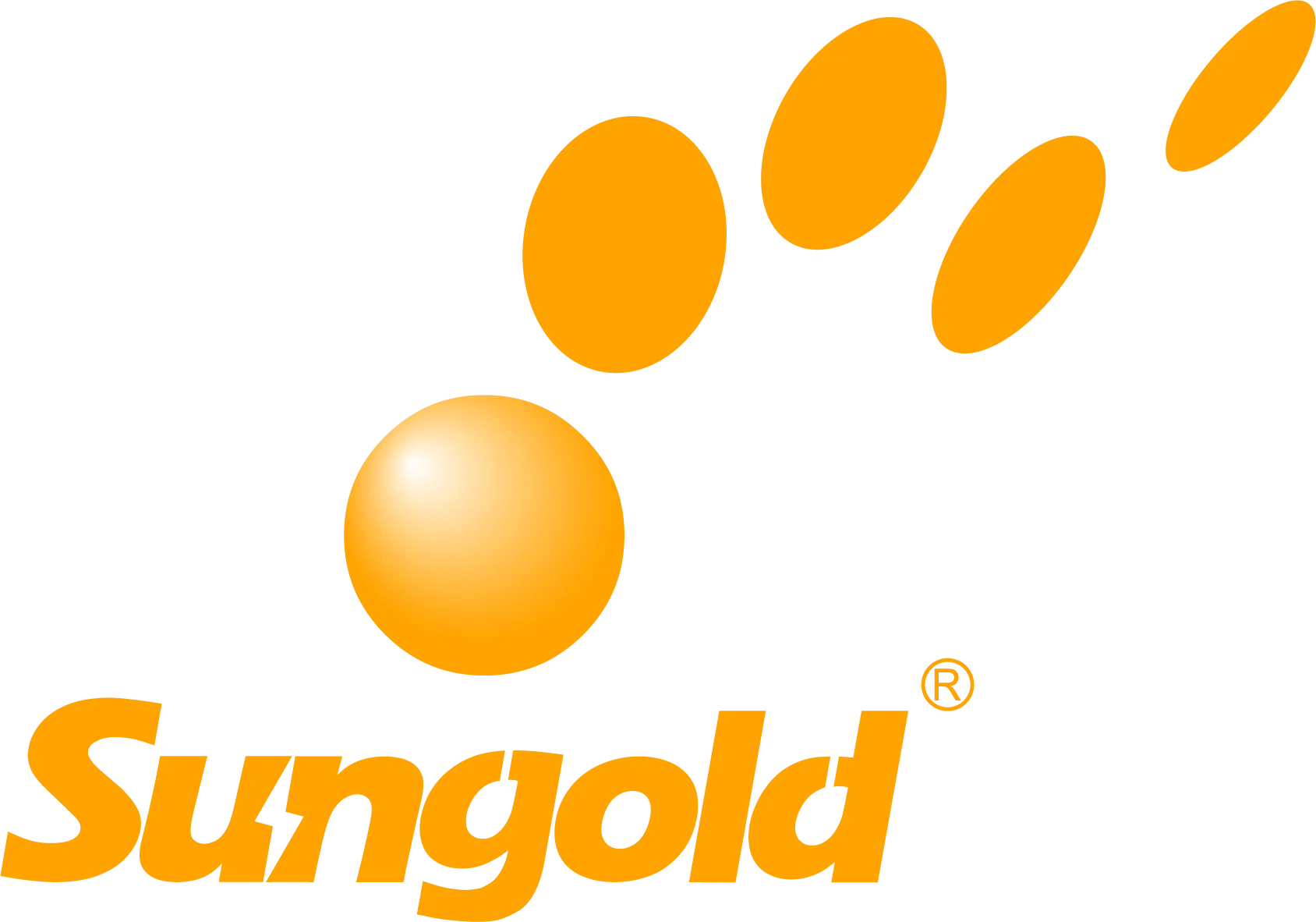People usually construct sheds in remote or outdoor locations where connecting to the main power grid is difficult. This makes it challenging to provide electricity, especially if the wiring is complicated or the distance is long. To solve this problem, solar power for shed makes solar-powered sheds more and more common.
Can I Power a Shed With Solar?
Solar power for shed provides a sustainable and secure stand-alone power solution for the shed that can be independent of the grid system and unaffected by the location of the shed, making it easier to use electricity.
However, before installing, you need to be aware of grid permit requirements, and crucially, the configuration of the system. If you are installing an off-grid solar kit that is independent of the local grid voltage, you may not need a building permit. However, if you plan to integrate a rooftop solar system and connect it to your home’s electrical supply, then a permit will likely be required. In this case, it’s best to enlist the help of a professional electrician and solar panel installer to ensure compliance and optimal performance.
Shed Solar Power Essentials: how to build a solar-powered shed?
To build a solar-powered shed, you need to select the right solar system based on its purpose and power requirements. But generally speaking, these components are essential:
Solar Panel for Shed: Panels collect and convert solar power for shed into direct current . You’ll need to choose the right number and power of solar panels based on your shed’s roof area and orientation. Generally speaking, solar panels can produce about 100 watts of electricity per square meter. In addition, it is also important to choose the right type of solar panels according to the structure of your cabin.
- Flexible solar panels are lighter and better for roofs with weak support, like metal and plastic sheds. You can install it through pre-drilled holes or silicone fixing glue. Setting up and taking down is easier, making it suitable for small houses that people can demolish whenever possible.
- You can use rigid solar panels in wooden sheds or sheds built with cement and steel bars, which are stronger and will last for a long time. Their roofs have better load-bearing performance, and the rigid solar kit has a longer service life and can meet longer use. It lasts longer and meets low budgets. The greater choice of solar power for the shed will last longer.
Battery: Used to store electricity generated by solar panels to power your shed on cloudy days or at night. This requires choosing the right battery capacity and type based on the shed’s power consumption and backup time. Lead-acid and lithium-ion batteries are popular solar cell options. Choose one based on your budget and needs.
Charge controller: Manages solar panel energy to protect and prolong the battery’s life. People commonly use PWM and MPPT as charge controller types. You need to choose the right charge controller type and size based on the parameters of your solar panels and batteries.
Inverter: An inverter converts DC power to AC power providing your shed with common types of power(micro inverter or string inverter). You will need to choose the right inverter type and size based on the type and power of appliances in your shed.

Selection and Installation of Shed Solar Power
Types of Solar Panels: The three main types are monocrystalline, polycrystalline, and thin-film. Monocrystalline panels are the most efficient and are ideal for sheds with limited roof space. Polycrystalline and thin-film panels are less efficient but can still be used, though you may need more panels to achieve the required wattage.
Power Output: Home solar systems typically use PV modules with power outputs ranging from 360 W to 440 W. Consider your shed’s energy needs and select panels accordingly.
Installation: For rooftop installations, panels are typically mounted using racking systems anchored to the roof structure. Hiring a professional rooftop installation team is advisable to ensure safety and proper mounting.
DIY Kits: Small solar panels are available and can be easier to set up. These kits may include mounting grommets, deployable kickstands, or adhesive backing for thin-film panels. DIY panels generally have lower power outputs (below 200 W) and are smaller and lighter than professionally installed modules.
Consultation: If you’re unsure about the number of panels needed for your shed or any other aspect of the installation process, consider consulting a professional solar company for guidance.
By carefully considering these factors, you can select and install the most suitable solar panels to power your shed efficiently and effectively.
Understanding Solar Power for Sheds: How It Works
How does solar power for shed work? Solar panels collect sunlight, convert it into direct current, and send it to the inverter through wires.The inverter converts DC power to AC power and supplies it to the shed’s lights, fans, and refrigerators. The inverter sends excess power to the charge controller. The charge controller adjusts the current and voltage. It does this based on the battery’s condition. The charge controller also stores the power in the battery. When there is no sunlight, a battery goes through a charge controller and powers an inverter. The inverter then converts the power into alternating current to keep the shed’s appliances running.

How much solar power do I need for a shed?
If you use your shed for simple storage, you may only require a 50W solar panel to power an LED light or two. A 50W solar panel can generate 200Wh of solar power for a shed, with 4 hours of strong sunlight.
If your shed is your office, you may require 2 solar panels. These panels will power your computer, printer, modem, lights, fan, heater, and coffee machine. Each panel should have a capacity of 250W. Each panel should be 250W. Two 250W solar panels can produce about 2000Wh of electricity per day, assuming 4 hours of peak sunlight.
If you use your shed as a workshop for power tools, you may require approximately 4000W-5000W of solar power. This amount of power is necessary to operate your equipment, lights, and other devices. You may need 3 x 250W or more solar panels, depending on the wattage and usage of your tool.
The shed needs solar panels to produce electricity. It requires 50W for simple storage, 250W for a home office, and 250W (or more) for a power tool workshop.
| Shed Use Case | Solar Panel Requirement | Daily Electricity Production (Wh) |
| Simple Storage | 1 * 50W solar panel | 200 |
| Home Office | 2 * 250W solar panel | 2000 |
| Power Tool Workshop | 3 * 250W (or more) | 4000-5000 |
To calculate the exact number of solar panels you need for your shed, you need to consider the following factors:
- The total wattage of your appliances and devices. You can find the wattage on the labels or manuals of your products, or use a watt meter to measure it.
- The daily hours of usage of your appliances and devices. Estimate how much time you use each product daily. Multiply the wattage by the hours to find the watt-hour (Wh) consumption.
- The peak sunlight hours in your location. This is the average number of hours per day when the solar radiation is at its highest. You can find this information on online solar maps or calculators.
- The efficiency and losses of your solar system. This includes the losses from the charge controller, inverter, battery, wiring, and shading. You can assume an average efficiency of 70% for your system, or use a more accurate value if you know it.
Use the solar panels for shed calculator will be faster and more convenient:
How much will a solar-powered shed cost?
The cost of a solar-powered shed depends on several factors such as the size and type of shed, the power output and capacity of the solar system, and the installation and wiring costs. The average cost of solar power for a shed is over $10,000. This includes the solar panels, batteries, inverters, controllers, and installation costs that we mentioned in the previous section.
However, the cost may vary depending on your specific needs and preferences. You can also save money by building your solar shed or using a DIY kit. Government incentives for solar energy can reduce the amount of money you need to pay upfront. If you meet the necessary criteria, you may be eligible for a 30% tax deduction.
| Type | Features | Cost Range | Applicability |
|---|---|---|---|
| DC Solar System | – Simple and easy to understand, easy to set up | $100 – $200 | Powers low-voltage lighting, not suitable for powering plug-in power tools or other devices |
| AC Solar System | – Higher power, capable of powering plug-in power tools, workshop and area lighting, and charging cordless tools | $3000 – $5500 | More powerful, the power ranges from 400 watts to 800 watts, suitable for various equipment and purposes |
| Solar Shed (Unassembled) | – Can retrofit an existing shed into a solar shed, or purchase unassembled kits. Starting at $3300, suitable for basic 10×12 foot sheds. | $3300 and up | Suitable for sheds, various shed kit sizes and styles are available for selection as needed |
However, you can use an inverter to convert DC to AC for use, installation may require consulting a professional.
Frequently Asked Questions About Solar Power For Shed
How much solar power do I need for a shed?
It depends on your energy needs and location, but typically, a small shed might require a 100-400-watt solar panel setup.
What can you run off a 200 watt solar panel?
A 200 watt solar panel can power small devices like LED lights, phone chargers, and small appliances such as fans or laptops.
What can a 4000 watt solar system run?
A 4000 watt solar system can power a variety of household appliances including refrigerators, washing machines, TVs, computers, and lighting for an average-sized home.
What are the options to power a shed?
Options include connecting to the main grid, using a generator, or utilizing solar power through solar panels and batteries.
How do you power a shed off the grid?
To power a shed off the grid, you can install solar panels with batteries for energy storage, ensuring a self-sufficient and sustainable power source.
We are Sungold Solar, a solar panel manufacturer with 16 years of experience in providing OEM & ODM customized service. We have mature solar manufacturing experience and rich customer cases of solar system projects.
If you want to wholesale or customize any type of solar panels for your solar powered shed, we can provide professional service and high-quality solar components. Please feel free to contact us.











